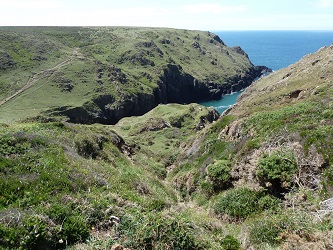Current ISIS code: F113
Previous assemblage name: F131 & F132
Linked assemblage: F111 bare sand & chalk & F112 open short sward; it is possibly a sub-community of either SAT, and has a small group of marker species.
Description of habitat typically supporting the assemblage:
This assemblage type was based on work carried out on sea cliffs in Devon and Cornwall, where assemblages exploit sparsely vegetated dry ground subject to exposure to wind and sand blast. Forty species are currently typed to it. Its detection was very patchy in tests. It always occurred mixed with F111 or F112 assemblages, because it was based on species associated with a biotope rather than assemblages that occur in nature. In 2008 its species were recoded to F111 or F112 and it was converted into a cross-cutting assemblage type.

Many of the characteristic species are phytophagous and host-specific to the specialist plants of this extreme environment.
Potentially important environmental impacts
Nutrient enrichment through fertilisation / diffuse pollution. It can coexist with early successional assemblages in habitat matrices, but persists when grazing and active management of lowland heaths is discontinued leading to the disappearance of early successional assemblage types. It is likely that part of the expression of this assemblage lies either side of the Moorland Line.
